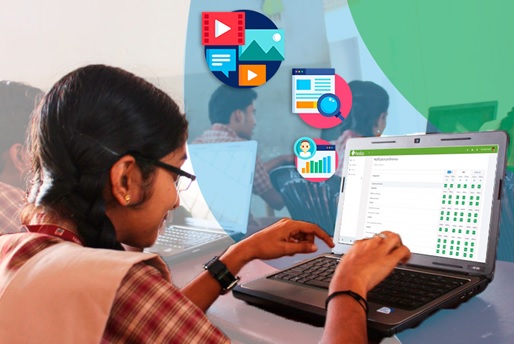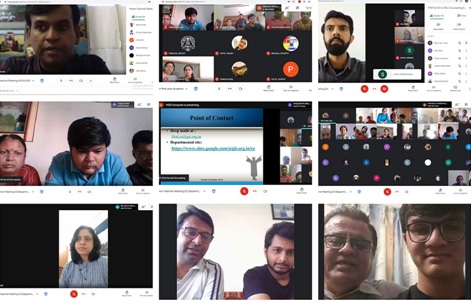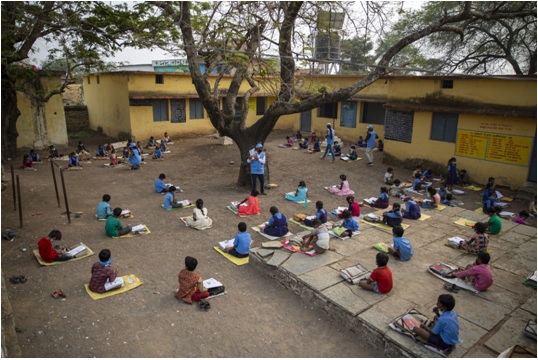The school management system in India has changed to a great extent. Usually, it used to be taking care of school children, conducting parent-teacher meetings, conducting examinations, tracking the progress report of students, and giving ultimate feedback. Well, due to the introduction of e-learning or the virtual learning approach, the foundation of the school management system has been renovated into a wholesome technology-based system.
During the 1st lockdown phase (2020), e-learning was a new challenge for the educational department of India because the availability of the internet was not reachable in every remote corner of India. The administrative tasks became extremely tough to continue as there was no school administration software in schools apart from the metropolitan cities. But, broadly speaking, the pandemic has generated the idea of shifting the entire learning process virtually, and consequently, educational organizations are loving this new concept.
Educational administration and management courses give proper explanations to schools and colleges regarding the benefits of this new school management system. First thing first, e-learning has reduced the need for commuting to educational institutes, for real. Conducting classes online at the comfort of being at home has increased the productivity and efficiency of the learning system.
HOW THE AFFLUENT SECTION IS GETTING BENEFITTED?
Using school ERP software, the educational leadership management is being able to track every minute detail regarding the institutions. Honestly, the scope of school management systems using a cloud-based approach is not yet that popular in remote or rural areas. However, schools in metropolitan cities and urban areas like Kolkata, Mumbai, Delhi, Indore, Hyderabad, Bangalore, Chennai, Ahmedabad, etc., have adopted themselves to a hybrid model having both online as well as in-class learning processes.

Private schools, international schools, IB schools, etc., are using the software system to keep every data on the record. This data are being protected by a tight cyber security system. There are many teachers and administrative professionals who have never been that much tech-savvy before the onset of this e-learning mode. Educational administration programs are conducting webinars and seminars countrywide to provide a clear idea and training in this new format of the school management system.
Students are loving this new technological aspect of learning methodology because they can learn better. An in-class session is obviously quite an interesting one but the gamification model of learning has accelerated the effectiveness of students’ active participation to a huge level. Thus, the management of students has become quite easier.
In fact, the introduction of mobile apps where students can track a chapter or a subject and can pause or resume the ongoing chapter both in online and offline mode in real-time has done an incredible job. Microlearning is the new learning management system that has enabled students to score higher as this method includes an assignment at the end of every module, failing to attempt which the next module cannot be accessed. Besides, access to the dashboard is quite feasible for both teachers and students.
This new phase includes students providing feedback to every learning model and they can submit their assignments within a pre-mentioned deadline. The school administrators believe that this cloud-based educational system has made the fees management process hassle-free due to the digital mode of transaction. Well, attendance management is having more clarity as teachers and students can log in to the ERP system easily. Developers have installed a feature in this software system where moderators can clearly track who is using the software for the learning process. Thus, students have no scope of logging in to the ERP system and sitting idly for the rest of the day.
A special parent portal has been designed so as to conduct parent-teacher meetings efficiently. It is not just the lockdown but there are multiple reasons why parents remain unavailable physically in such meetings. There can be any medical emergency or any other essential engagement because of which they fail to attend such meetings. Having such a portal will enable parents to attend these meetings online as accessing the software is feasible if one is having a smartphone along with good internet speed.

THE BROADER SCENARIO:
Having said all these, schools of semi-urban and urban regions are privileged with these awesome e-learning features. Vidyasaarathi, one of the leading scholarship management portals of India have conducted a survey in the year 2020 where they stated that 79% of students are using smartphones to study online.
I can understand that smartphones are quite affordable these days but the internet is not that cost-effective. A minimum package of the internet having moderate speed in semi-rural areas costs INR 500. If we check the daily news, we can come across various headlines where people coming socio-economically background section of society are not being able to afford such costly internet. The Hindu revealed devastating statistics in the year 2021 in rural Karnataka.
“Two surveys — School Children’s Online and Offline Learning (SCHOOL) and Annual Status of Education Report (ASER) — evaluated the impact of the pandemic on learning outcomes. In August 2021, only 8% of children in rural areas and 25% of children in urban areas studied online regularly. Even those who were online found it difficult to follow the curriculum and had connectivity issues. As a result, the % of children who could read and perform calculations declined from pre-pandemic levels.”

Well, rural Karnataka is the only location that has gone through this phase. Entire rural India has been a victim of this online learning method. Having a smartphone or a good internet does not solve the problem. Operating the ERP system is a big deal and a student in a village of India whose major meal of the day is dependent on the mid-day meal being provided by the school is not that tech-savvy to access such ERP. As a result, many students skipped online classes. Statista has recorded an observation where the population (in millions) across rural and urban India as per 2020, 2021, and 2022, is 900:483, 903:495, and 905:506 respectively.
It is clearly visible that with that rural population is increasing proportionally with the urban population. Hence, the condition of online learning can be easily assumed from this figure. Besides, millions have lost jobs, families, etc., during covid and there has been a drastic downfall in the earning members of numerous families.
Thus, it can be concluded that the introduction of the e-learning mode does not elevate the status of the school management system in overall India. Digital India cannot be possible totally unless the per capita income of India is increasing. Educational administration and management courses are definitely helping teachers to get trained in the virtual online training mode of learning to a great extent but affording this particular platform of education is yet not possible for millions given the picture of real India.
Written By : Ashwini Chandra








